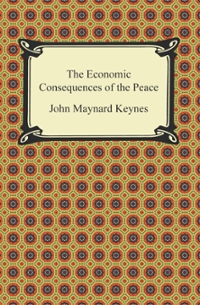Question
Brief and clear explanation 1. ( a) Explain the following terms which are commonly used in estimating the National Income statistics of a country: Subsidies;
Brief and clear explanation
1. (a) Explain the following terms which are commonly used in estimating the National Income
statistics of a country:
Subsidies;
Incomes-in-kind;
Net Factor Income from the Rest of the World.
(b) (i) Illustrate by means of a diagram the Circular Flow of Income for an open economy.
(ii) Are transfer payments an injection into, or a leakage from the Circular Flow of Income?
Explain your answer.
(iii) Outline three current determinants of the level of consumption in the Irish economy.
(c) (i) Using the Keynesian multiplier process outline how a fiscal stimulus ( i.e. a government
injection) would affect an economy's Aggregate Demand.
(ii) Explain why the Irish government might find it difficult to implement such a Keynesian
stimulus plan at the current time.
2' (a) (i) Explain, using a numerical example, how banks create credit in an economy.
(ii) Outline two factors which limit the ability of banks to create credit during recessionary
times.
(b) Some central banks have responded to the global financial crisis by introducing the monetary
policy measure of 'Quantitative Easing' (i.e. buying financial assets from financial
institutions using new money it has created).
(i) Outline two possible economic effects of this measure for an economy.
The European Central Bank (ECB) reduced interest rates in 2012.
(ii) Discuss two possible economic benefits of falling interest rates for the Irish economy.
(20)
(c) The monetary policy of the ECB aims to maintain the annual euro area inflation rate at a very
low level.
(i) State the rate of inflation in Ireland during 2013, as measured by the Consumer Price
Index (CPI).
(ii) Outline two uses of the CPI, other than as a measure of the rate of inflation.
(iii) Discuss the possible limitations of the CPI as an accurate measure of changes in the cost
of living in Ireland.
3. (a) 'The Balance of Payments figures give the most detailed information on Ireland's large and
rapidly growing internationally traded services sector' (The Irish Times, September 2012).
(i) Explain the term Balance of Payments Current Account.
(ii) Explain two economic consequences of a surplus on the Balance of Payments Current
Account.
(iii) Describe how foreign firms operating in Ireland may affect Ireland's Balance of
Payments Current Account. (30)
(b) Discuss the possible economic effects for the Irish economy of the euro rising in value
relative to many other international currencies. (25)
(c) 'Exporting businesses need to become the engine of economic growth.'
(Statement of Strategy 2011-2014, Department of Jobs, Enterprise and Innovation)
Discuss the key challenges for Irish businesses on international markets. (20)
4. (a) 'The rate of unemployment among 15-24 year olds in Ireland has increased by 74% between
2006 and 2011' (Profile 3 At Work, Central Statistics Office, July 2012).
(i) Explain three economic consequences of a high rate of youth unemployment on the Irish
economy.
(ii) Discuss three measures which the Irish government may introduce to reduce the problem
of youth unemployment. (30)
(b) 'Ireland's National Debt was 137.6bn at the end of December 2012'.
(National Treasury Management Agency)
(i) Discuss the disadvantages for Ireland of having a high National Debt.
(ii) Outline two means by which Ireland's National Debt may be made more sustainable.
(30)
(c) Ireland, in common with many developed countries, is facing the challenges of an ageing
population.
Discuss the possible economic consequences of an ageing population for the Irish economy.
Step by Step Solution
There are 3 Steps involved in it
Step: 1

Get Instant Access to Expert-Tailored Solutions
See step-by-step solutions with expert insights and AI powered tools for academic success
Step: 2

Step: 3

Ace Your Homework with AI
Get the answers you need in no time with our AI-driven, step-by-step assistance
Get Started


